“Beetlejuice Beetlejuice” Editor Jay Prychidny on Capturing a Debauched Poltergeist’s Manic Energy
36 years after he first burst onto the screen in his title film—for a grand total of 17 minutes, by the way—Michael Keaton’s debauched poltergeist is back in trademark sinister style, black and white suit and hair akimbo, in Beetlejuice Beetlejuice. Tim Burton’s sequel turns up the heart, laughs, and gags, a cinematic feast overflowing with gleeful madness only Burton and his regular team of collaborators—longtime costume designer Colleen Atwood and composer Danny Elfman included—could dream up.
In the long-awaited follow-up, Lydia Deetz (Winona Ryder) returns to her childhood home. She’s no longer the cool kid but a lost medium who needs to reconnect to her roots and estranged daughter, Astrid (Jenna Ortega). Throughout a series of wild events, she calls upon her old enemy, Beetlejuice (Michael Keaton), to help her succeed. Their two worlds collide in ways seismic, cosmic, spiritual, and musical, and hijinks ensue.
The land of the living and the dead is cut together by editor Jay Prychidny, who previously edited Scream VI and episodes of Burton’s Netflix series Wednesday. Early on in the process of editing Beetlejuice Beetlejuice, Prychidny knew the laughs were there but had questions about how to reintroduce the character and world of Beetlejuice. Here’s how he did it.
How was it cutting the real world of the Deetz family versus Beetlejuice’s netherworld? Especially with Michael Keaton’s energy, how does that influence the flow?
There are two styles of the movie, at least in my mind. There’s the netherworld and the land of the living. They are very different. When it comes to the afterlife, the movie is called Beetlejuice, it takes a lot of cues from that character. He is this wild, anarchic character that can just snap his fingers, and he’s something else. With the editing, it was reflecting that tone, just this wildness and trying to infuse it with that Beetlejuice energy as much as possible. It was infused in all of it, but then the land of the living was in more tactile, more gentle moments. I found myself fascinated by the earthiness in many of the costumes and the hair and makeup.
With Beetlejuice, how much material did you have to play with there? How many options did Michael Keaton give you?
In terms of line delivery, it’s not like Michael was giving different line options, but frequently, what you get back is not what was in the script. So you read the scene, you know what they’re going to shoot, and then you get the scene back, and sometimes it could be almost nothing that was written on the page. Catherine [O’Hara] was the same way too. They worked through the script. They figured out amongst themselves what works for them and how they can make it better. How can you change it? How can you do something surprising?
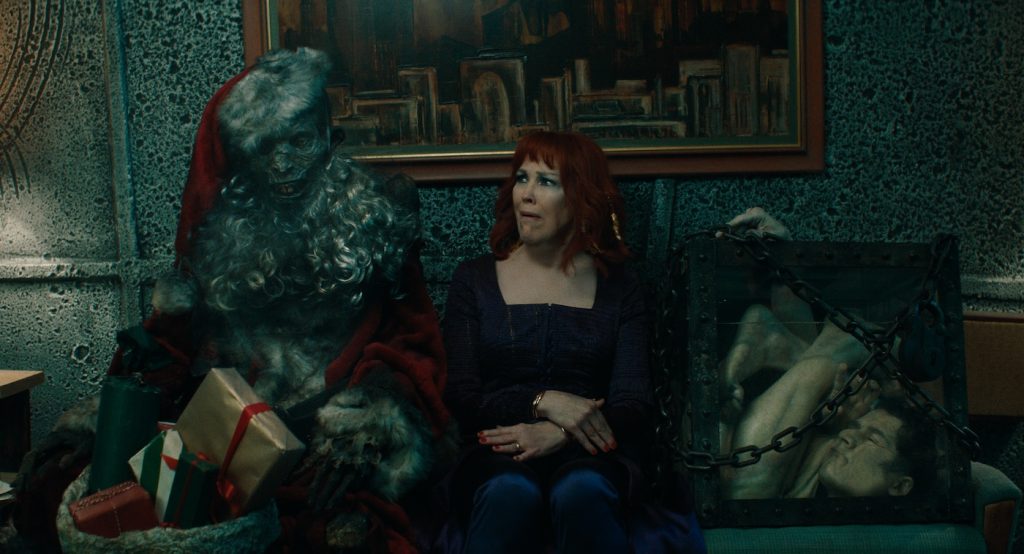
For example?
One perfect example is when Michael does the lip sync of Richard Marx’s song. “Wherever you go, whatever you do, I’ll be here, right here, waiting for you.” That was written as a dialogue scene between Lydia in the attic and Beetlejuice down in the model. But they didn’t shoot it. They just got to set, like, “Oh, we don’t need to do this dialogue.” Instead, they just sang the song. They didn’t know if they had the rights to it. There were no options. On the page, he said something like, “I’ll always be here waiting for you.” I think that just gave them the idea of like, “Oh, that sounds like that song. Let’s just do the song.” They lip-sync and grab a guitar. All of this is happening on the fly.
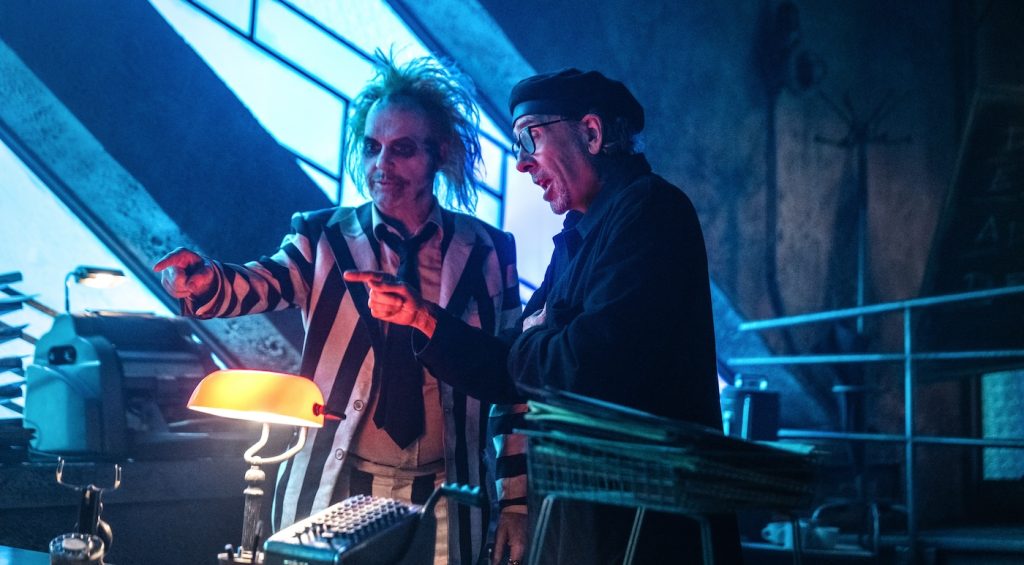
How much did you and Tim feel like you needed to explain Beetlejuice and the world again to audiences?
It was a big question. There was definitely a lot more in the script. Tim’s feeling about that stuff is just that he doesn’t like it. He doesn’t want to shoot expositional dialogue. Same thing with Michael Keaton. A lot of the stuff that he changed on set was that stuff, not wanting to be an expositional character. We ended up in a place where, because of Tim’s instincts, Michael’s instincts, Catherine’s as well, a lot of that stuff got really pared back in the shooting of it.
How do you pare it back just enough but not too much?
We were kind of in this place with the question of whether we had pared too much back. Is this too difficult to follow? Are people not going to know what’s happening? Very surgically, we try to put in little bits to try to make it clear to an audience, trying to do it as quickly and seamlessly as possible. There was certainly a lot of anxiety around that. I mean, ultimately, this movie’s never going to make sense. That’s just part of the whole world; it doesn’t actually make logical sense. There’s that aspect of it, too.
Were there any lessons there as an editor?
That was definitely a huge lesson for me on this film because Tim’s instinct was so clear that you just don’t want to explain things. The more you explain things, the worse it gets, the less sense it makes. And so, I really interrogated that a lot. This movie really did teach me that you put a lot of faith in your audience, because I talked to people when we were still editing, what do you think this character’s about? What’s this storyline? Were you able to follow? For the most part, people could follow it without having things explained. I knew that, but I just really learned that even more. Audiences often don’t want things explained to them.
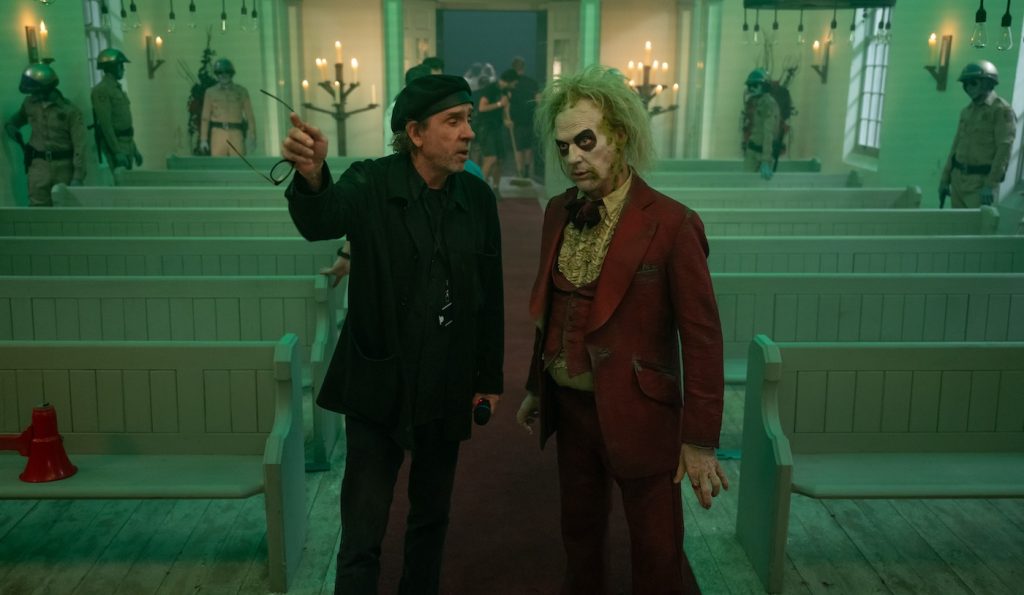
With a world this big and so many characters, when did you find it all finally clicking together in the editing room?
I think the main time you figure out what you’ve really got is after they’ve shot everything. For me, you don’t really get a sense of the film as a whole until they’ve really shot all of it, most of it, and you’re assembling it in order. That’s when you see if something has a flow or not. With this film, it had a really good 10 minutes, and then it all started to fall apart. So, it’s work to get to that point. It’s just a process of working, refining, and finding that flow and energy. I always knew the individual scenes were great because I loved the individual scenes. It was so fun to watch and so fun to cut, but then it’s a matter of how you work it into a whole. Hopefully, we’ve done it.
You have. The movie is just overflowing with gags, too. Any other major Beetlejuice moment that really changed on the fly?
It is wild. There was just so much inventiveness. Obviously, I’m not involved with the props department, but clearly they were on it, because it’s like they pull a guitar out of somewhere. The whole thing of Beetlejuice telling the story, his backstory to the shrinkers, he just pulls a microphone out and suddenly he’s on stage. That wasn’t planned; they just pulled out a microphone. They’re like, “Hey, Michael, try this. You have a microphone now.” The whole movie is filled with stuff like that.
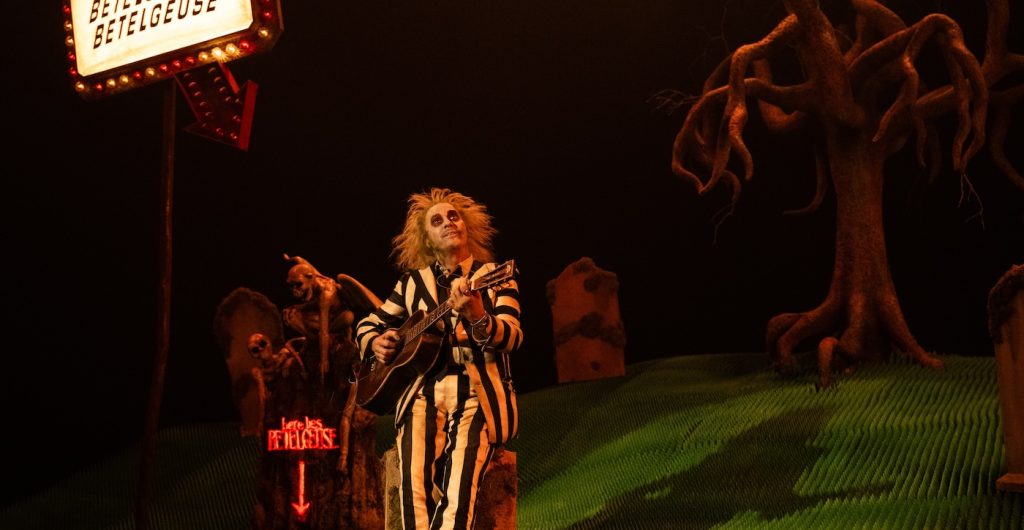
Did Tim have any specific requests for you when you got to work?
Tim’s process for the editor is to be at the studio nearby, if not on set, so he can pop in whenever he wants. And so, he’d often come by my room while he was shooting. Two times a day would be pretty average for Tim to look at dailies or scenes. He does things really fast, so he can come into the edit room and get a lot accomplished in 15 minutes while they’re doing a setup on the stage. Right from the beginning, I’m cutting scenes together. He’s looking at them just the next day and giving feedback. It helps inform what he’s shooting. I think one example of that is Michael’s first big scene; his first main scene was that first call center scene.
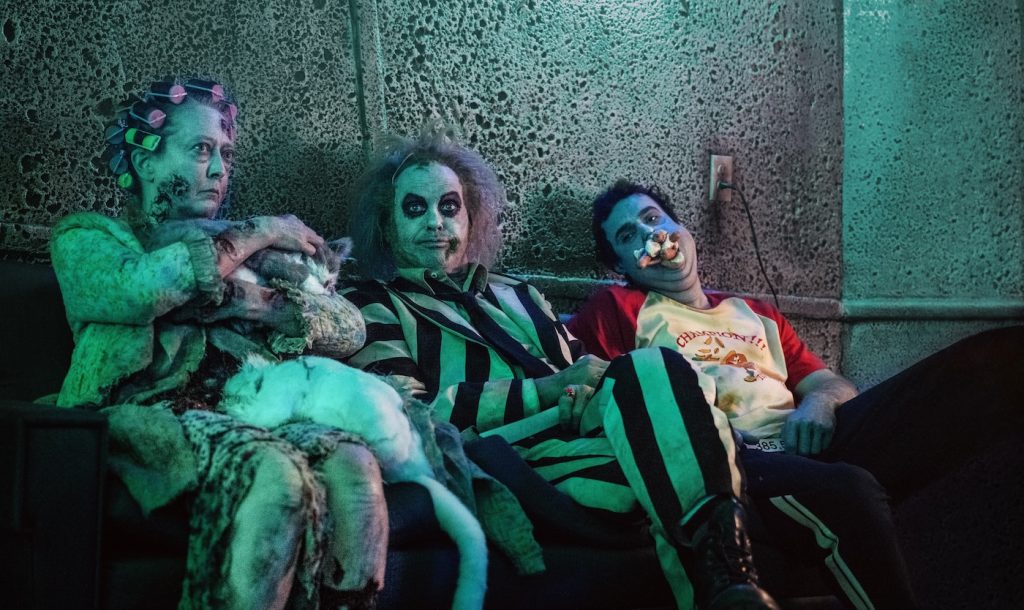
What was the feedback there?
It’s the scene with him and the shrinkers. Obviously, everyone’s very anxious. Michael’s coming back, Tim’s coming back. They’re revisiting this huge movie. When Tim saw the cut, I think he realized that he needed to shoot Michael in a different way. We’ve chopped it up a lot. So, you cut over here to the shrinkers, you cut over here to the telephone operator, and just try to get this wild energy. But Michael’s just walking around the room, and Tim saw that’s not the best way to treat that character. When he shot future scenes of Michael, he wasn’t walking around like a normal person so much. He’s more magical. He is more of a demon. He snaps from here to there.
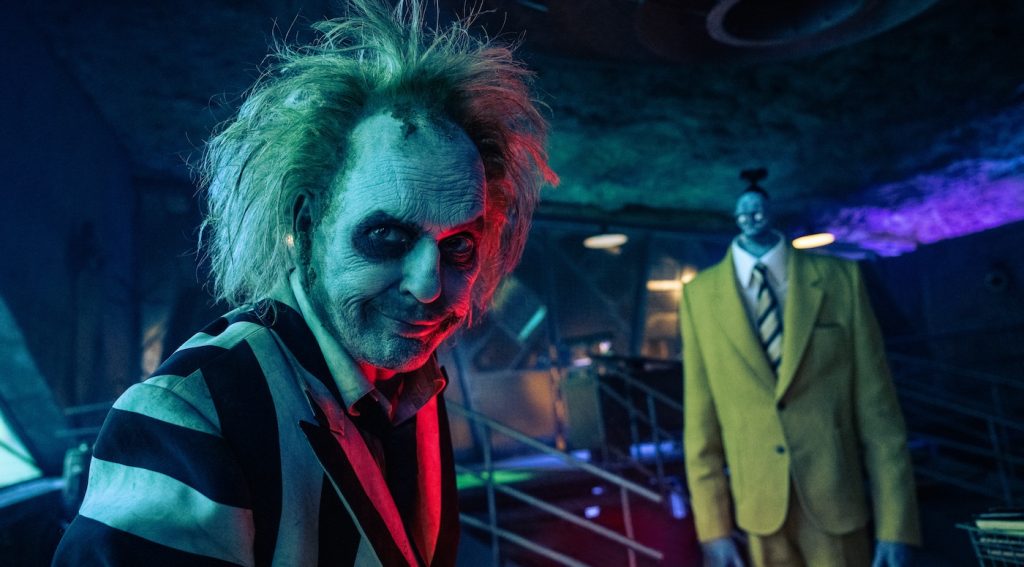
Beetlejuice Beetlejuice is in theaters now.
For more on Beetlejuice Beetlejuice, check out these stories:
“Beetlejuice Beetlejuice” Editor Jay Prychidny on the Gospel of Ghoulish Pacing
“Beetlejuice Beetlejuice” Scares Up Standing Ovation & Rapturous Reception at Venice Film Festival
Featured image: Caption: (L-r) WINONA RYDER as Lydia and MICHAEL KEATON as Beetlejuice in Warner Bros. Pictures’ comedy, “BEETLEJUICE BEETLEJUICE,” a Warner Bros. Pictures release. Photo Credit: Courtesy of Warner Bros. Pictures




